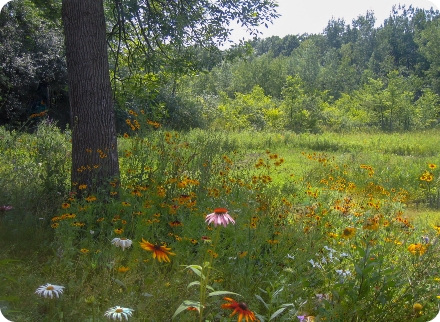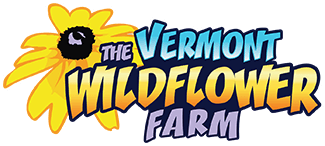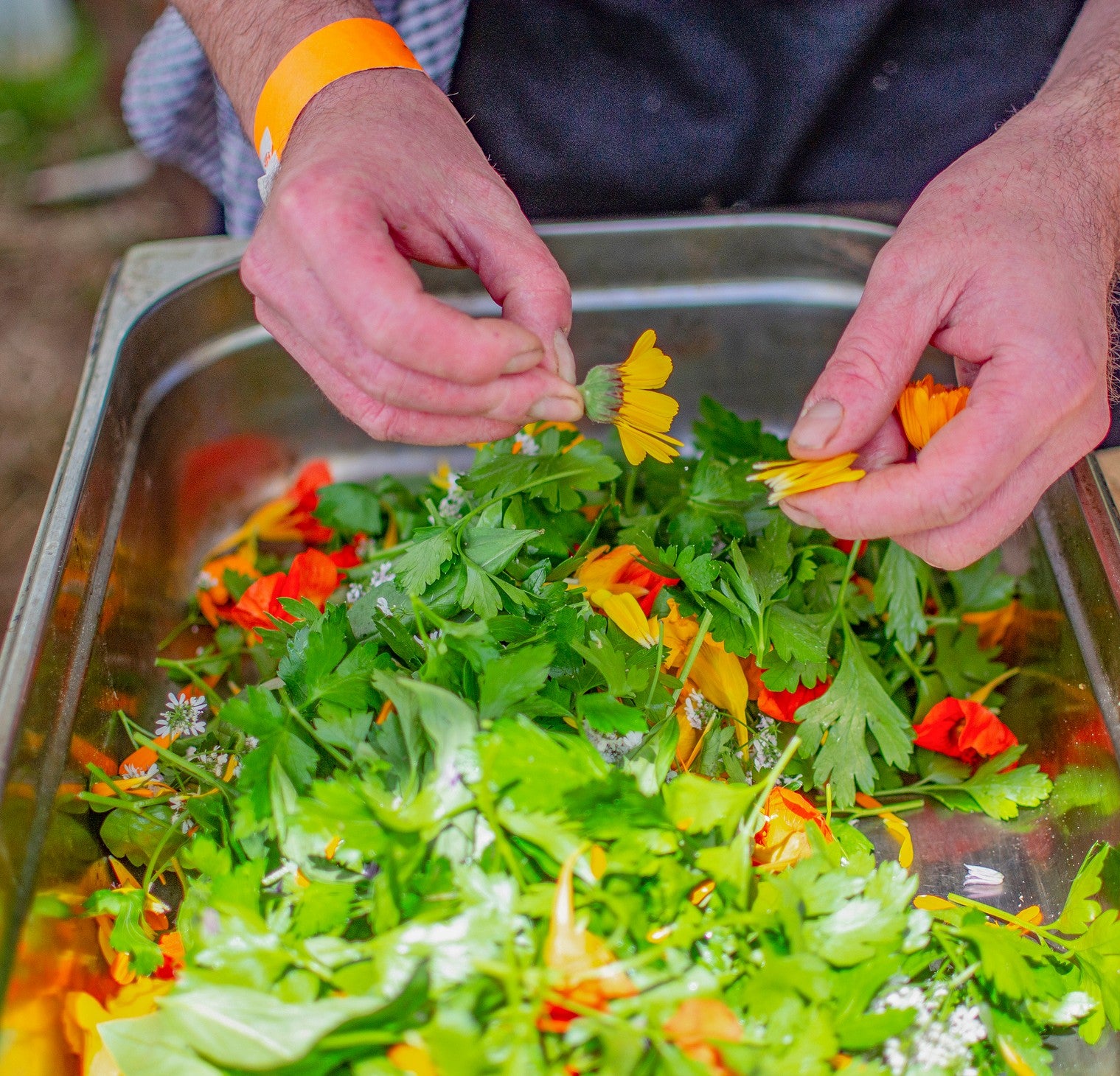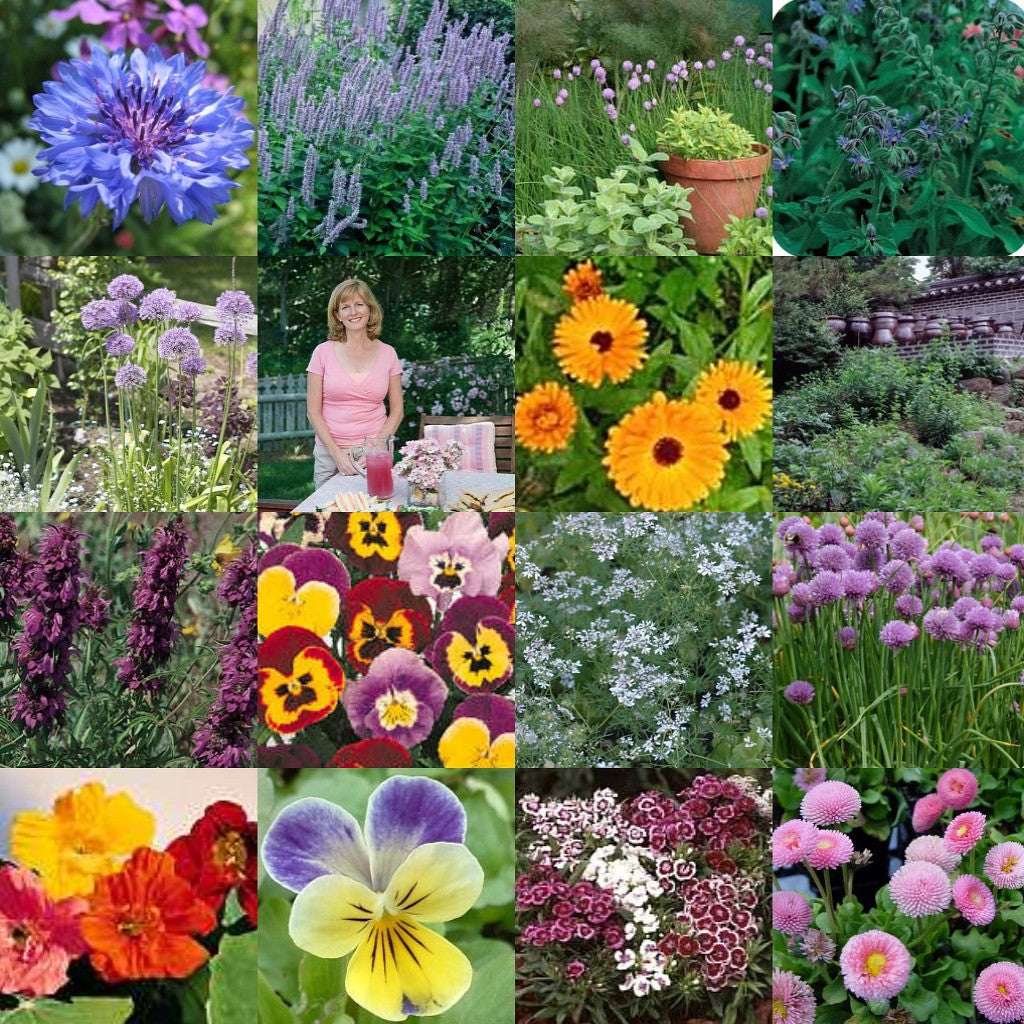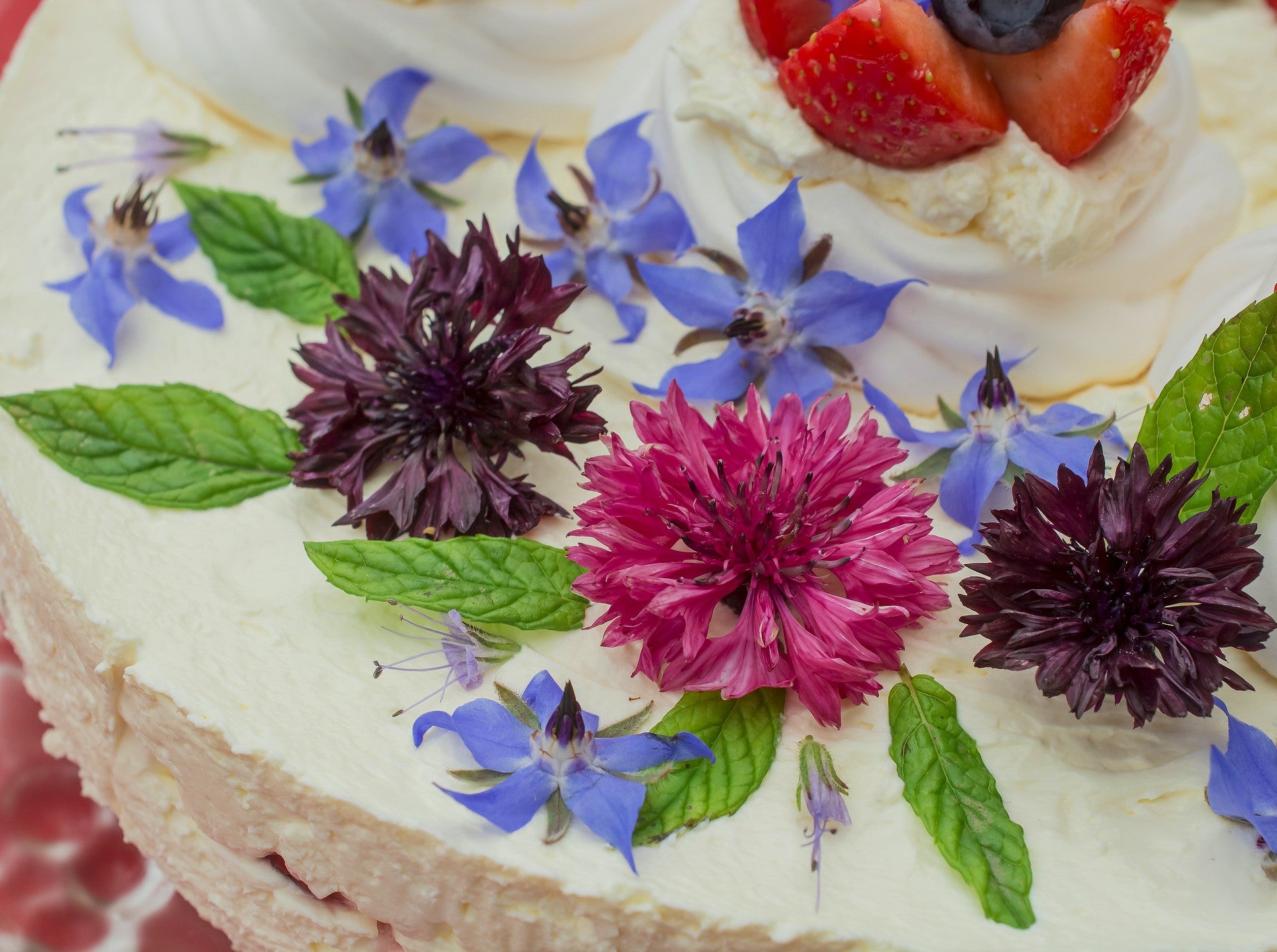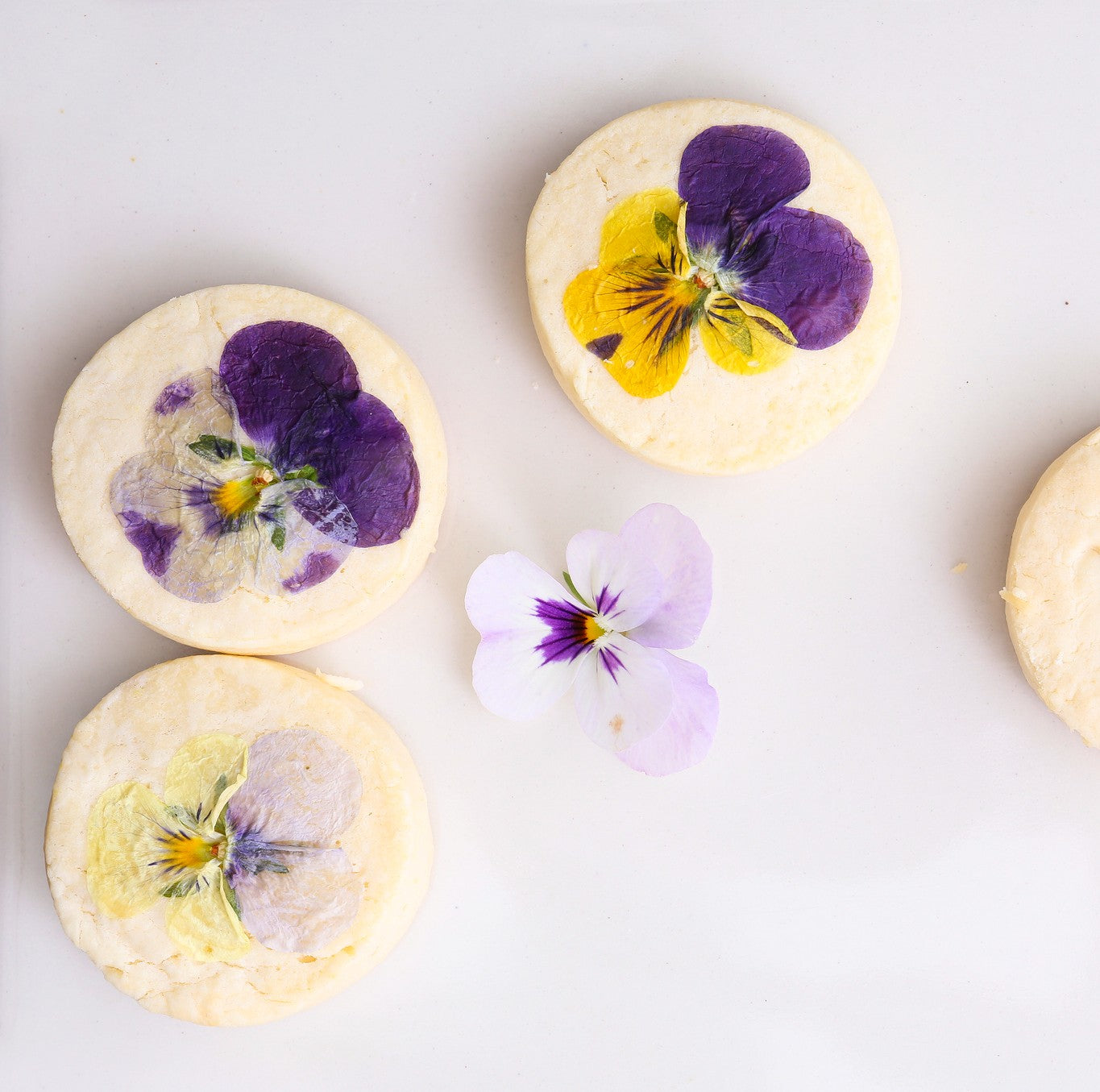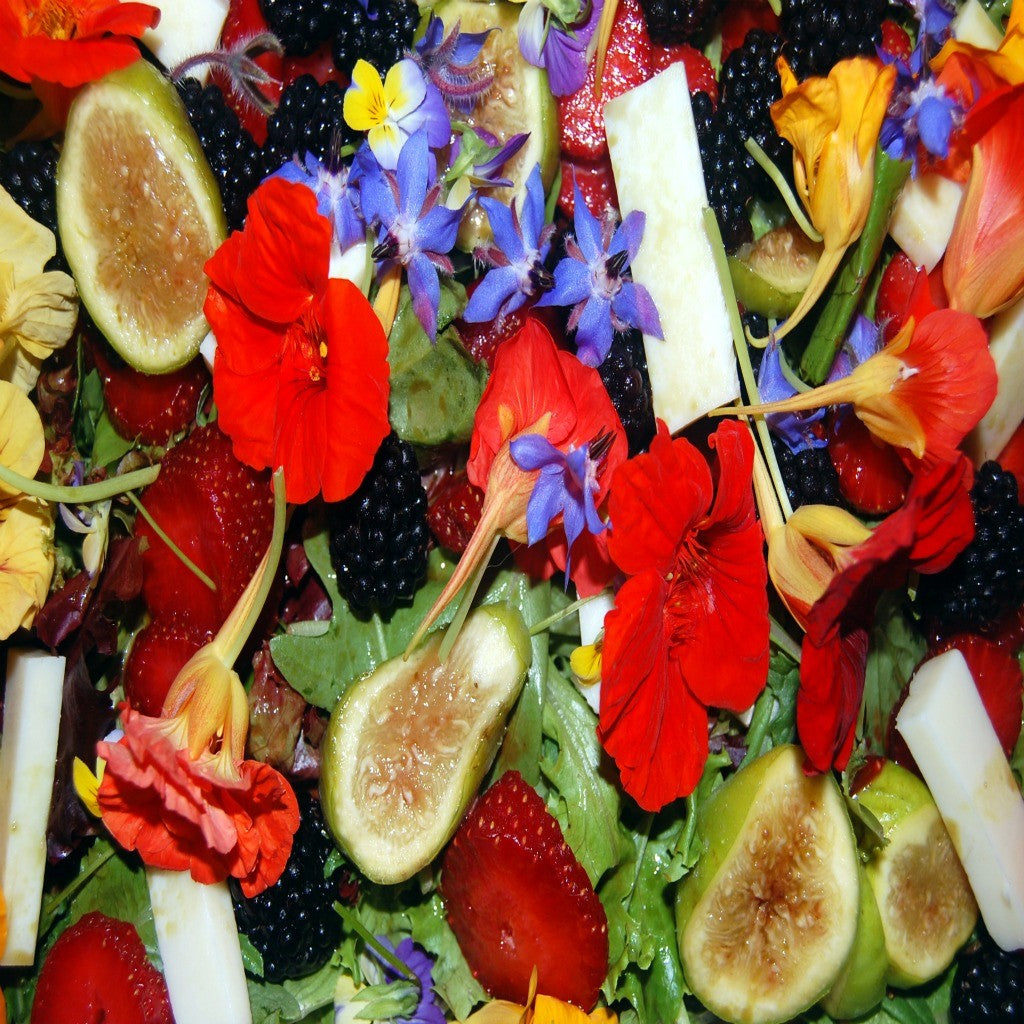Incredible Edible Wildflower and Herb Seed Mix
Incredible Edible Wildflower and Herb Seed Mix
 Yes!
This Item is Available
Yes!
This Item is Available
 Sorry!
This Item is not Available
Sorry!
This Item is not Available
EXTRA Discount! Spend $200 or More,
Take 20% Off! Use Code bulk20 at Checkout
Couldn't load pickup availability
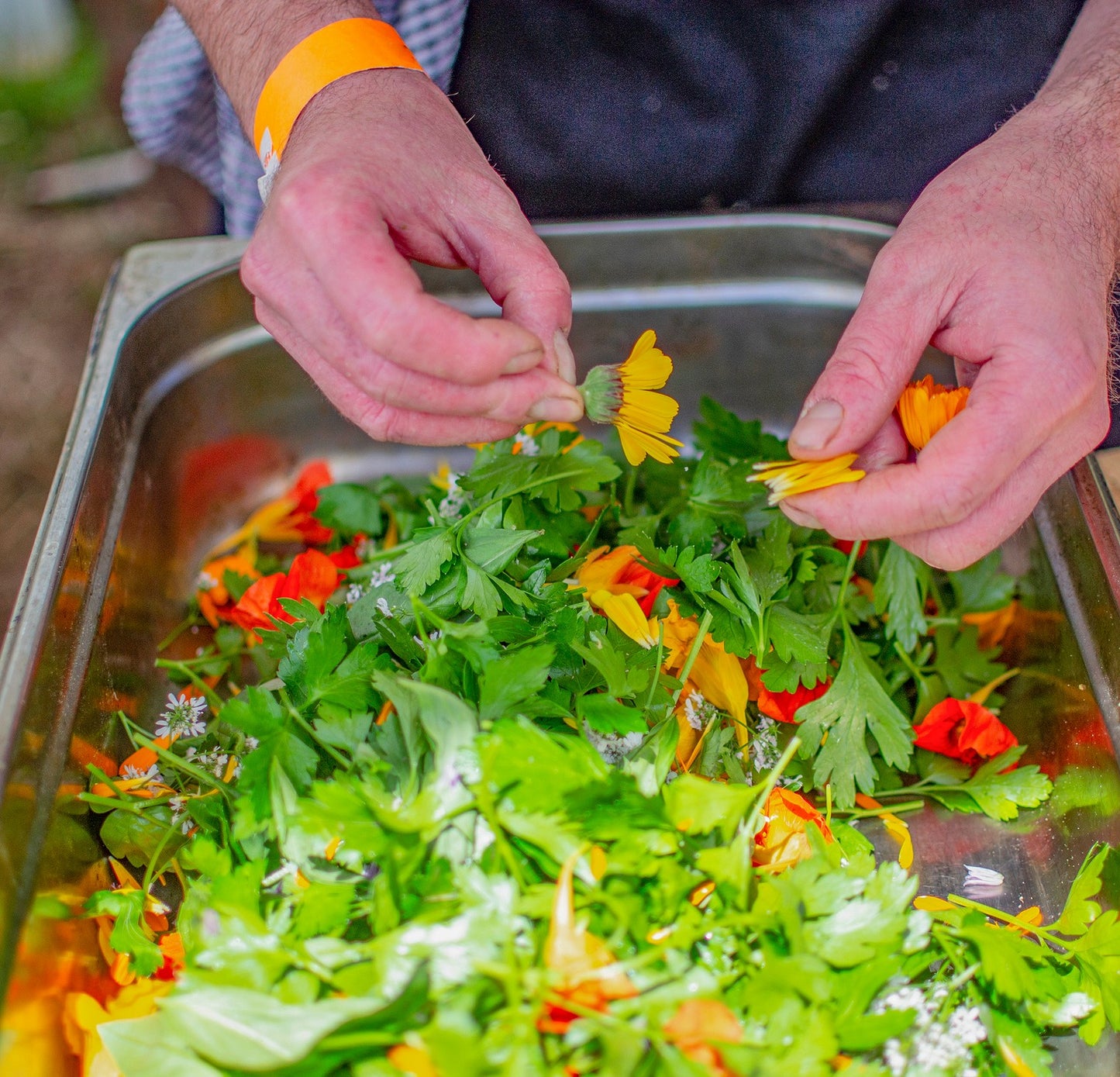
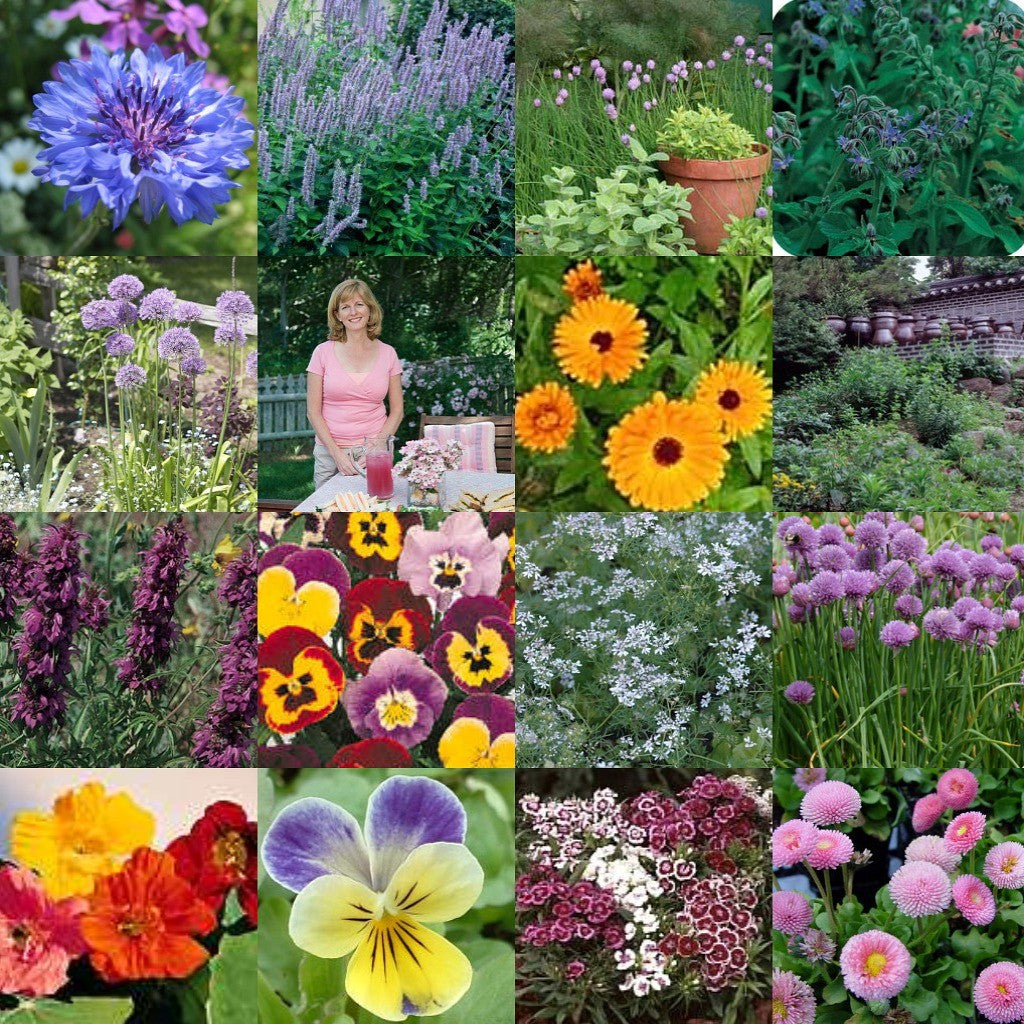
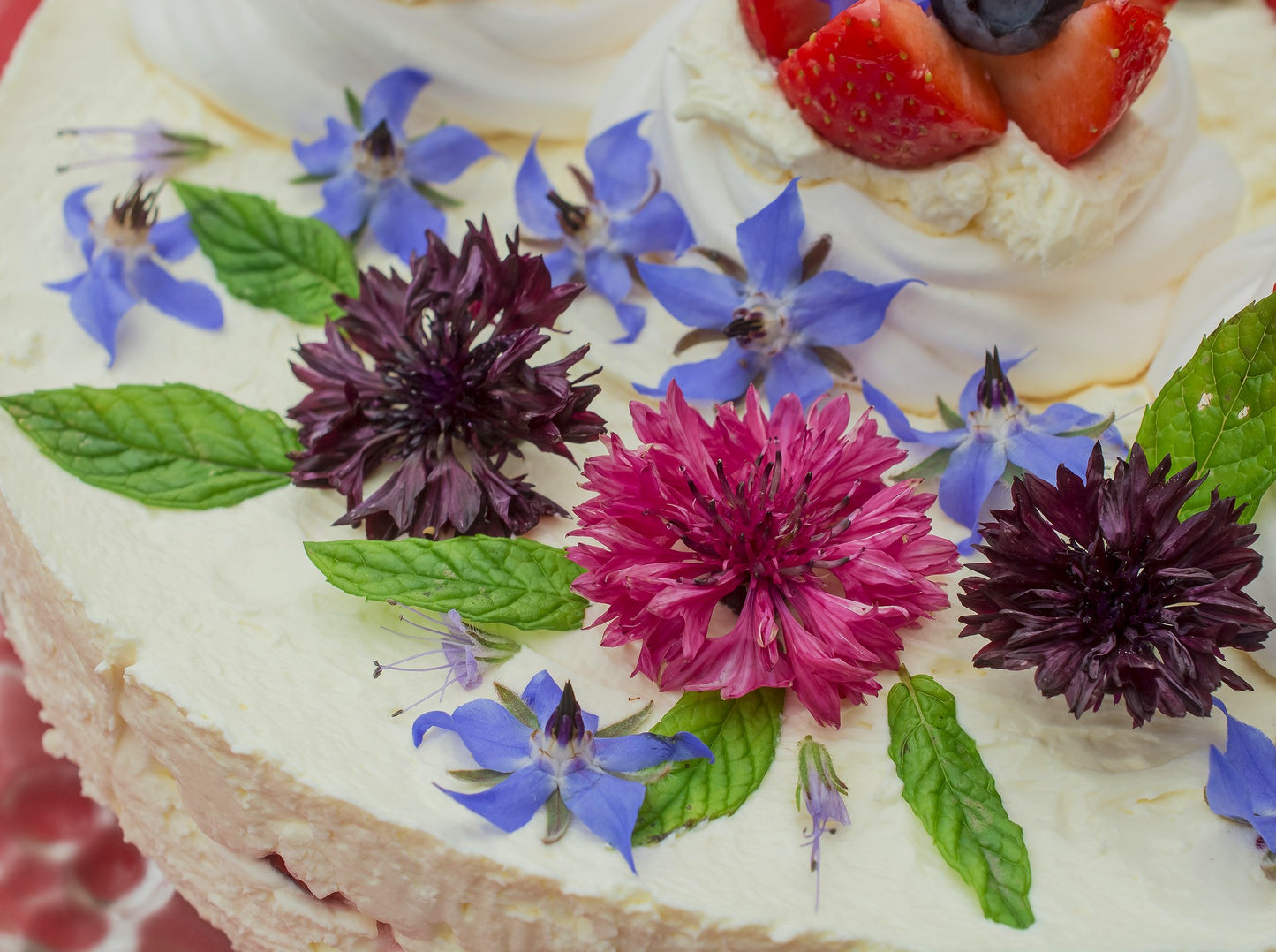
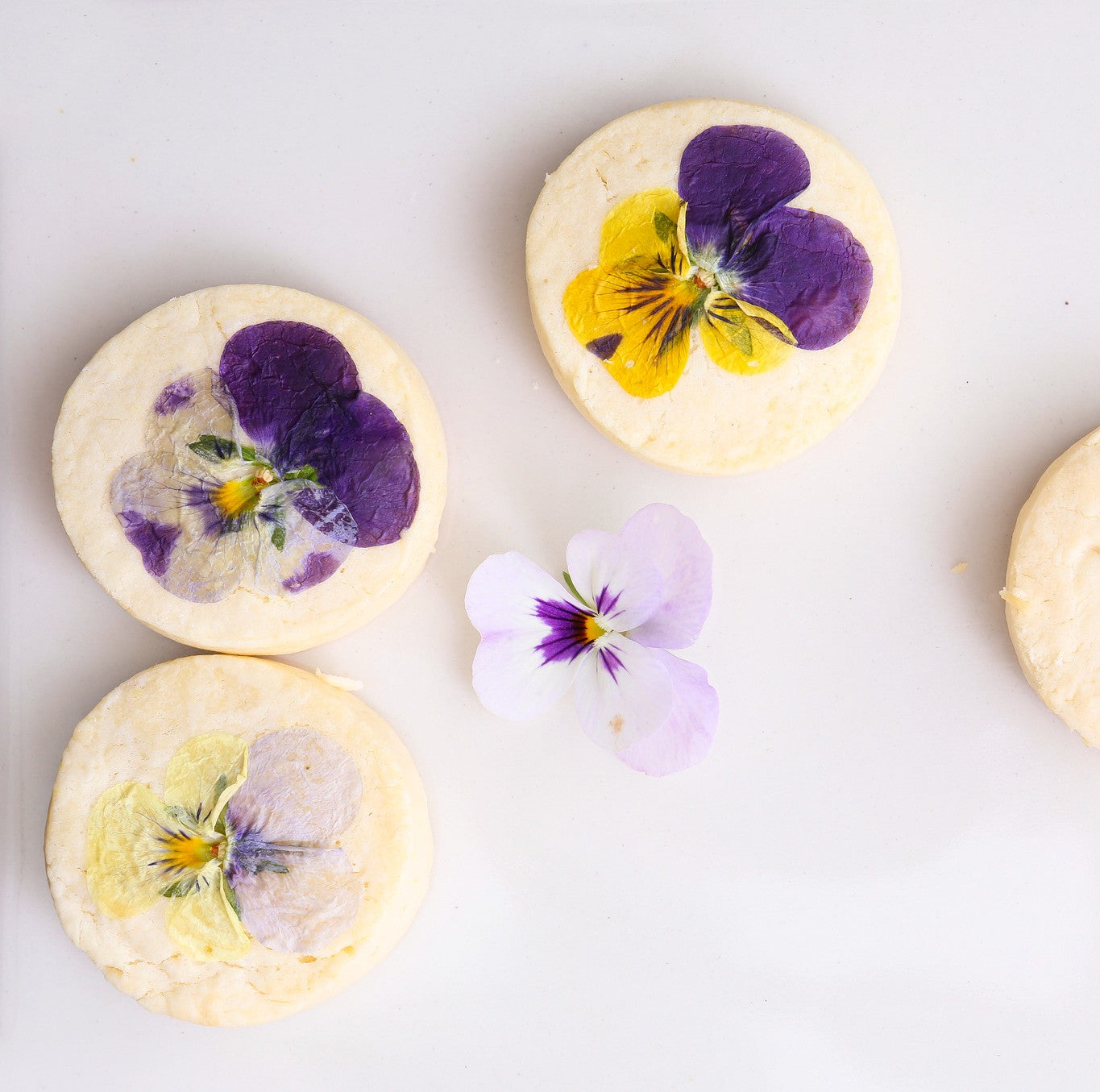
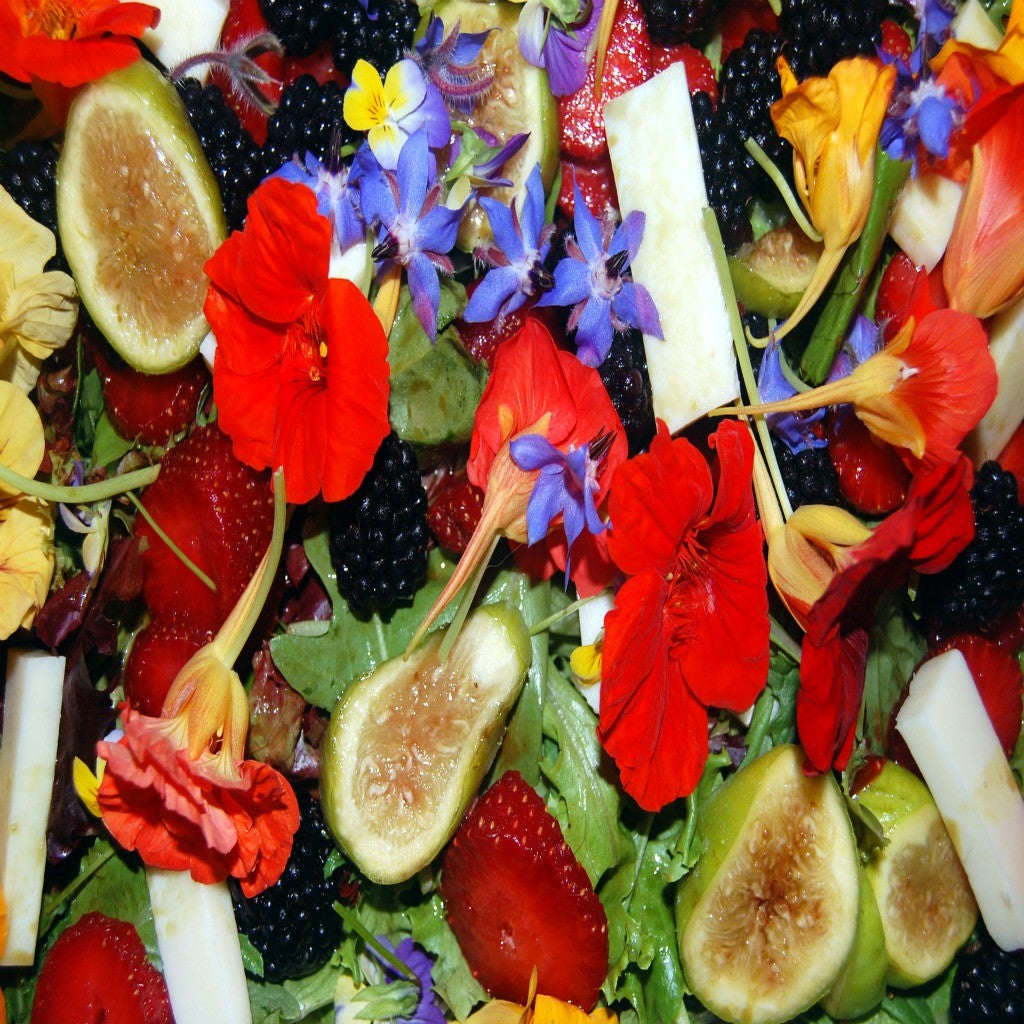
Don't Forget: Free Shipping on All Orders of $39 or More!
This mixture is a colorful and tasty blend of annual and perennial flowers which are edible. Cilantro, Nasturtium and Chives have tangy flavors while Dianthus is spicy and clove-like. Borage is a cool, cucumber-like flavor, and Calendula has a mild, peppery taste. Cornflower, Johnny Jump-up, Pansy and English Daisy have mild, slightly sweet flavors. Lavender Hyssop has a licorice flavor while Lemon Mint has a strong, minty flavor. Your mother always said, don't eat the flowers, but guess what, with this mix you can. Hand packed with 100% pure, fresh wildflower and herb seed (non-GMO & neonicotinoid/chemical free) Mix of 12 Annuals and Perennials with long lasting bloom.
Other Features: Easy to grow, low maintenance, edible, fun mix to try.
Coverage Rate: 1 lb. covers 1,000 - 2,000 sq ft.
Zones: 2,3,4,5,6,7,8,9
Light Requirement: Sun to Partial Sun Shipping: Usually ships in 2 business days. For a guaranteed delivery date, please contact customer service.
What's in the Mix: (Contains 12 Wildflowers & Herbs)
| Botanical Name | Common Name | Life Cycle | Approx. Height & Color |
|---|---|---|---|
| Centaurea cyanus | Multi Cornflower | Annual | 2 ft. Blue |
| Borago officinalis | Borage | Herb | 2 ft. Purple Flowers |
| Calendula officinalis | Calendula | Annual | 2-3 ft. Yellow/Orange |
| Allium schoenosrasm | Chives | Herb | 1 ft. Purple Flowers |
| Coriandrum sativum | Cilantro | Herb | 1 ft. White Flowers |
| Dianthus wee willie' | Dianthus | Biennial | 2 ft. Multi Pinks |
| Bellis perennis | English Daisy | Annual | 1-2 ft. Multi |
| Viola cornuta | Johnny Jump-Up | Perennial | up to 10-12 in. Yellow/Purple |
| Agastache foeniculum | Lavender Hyssop | Perennial | 1-2 ft. Purple |
| Monarda citriodora | Lemon Mint | Annual | 2-3 ft. Purple |
| Tropaeolum majus | Nasturtium | Annual | 2-3 ft. Multi |
| Viola wittrockiana | Pansy | Perennial | up to 10-12 in. Multi |
Detailed Instructions
How Much Seed Do I Need? In planning a wildflower meadow or garden, first you need to choose your site and estimate the square footage of the area. To find the square footage of any square or rectangular area, simply multiply the length in feet times the width in feet. For example, a border 50 feet long and 10 feet wide is 500 sq. ft. in area (50 X 10 = 500). For a circle, the area is equal to “pi” r squared, or pi (3.1) times the radius of your circle, squared. If your circle is 20 feet across, its radius is half of that or 10 ft. So, to get the square footage of the circle: 3.1 X 10 X 10 = 310 sq. ft. The amount of seed you should plant depends on the flower display you want. Most usually want the area to have maximum bloom. All mixtures are pure wildflower seed unless stated that they contain grasses or other types of crops. You can sow a bit on the denser side to help hold out the weeds and grasses. Just be sure not to under or over seed, as under seeding gives a sparser looking area and allows grasses/weeds to work their way in and seeding too densely causes stress as your wildflowers will compete with themselves for space and light making the area generally weaker!
Our suggestion for coverage is as follows: 1 oz. up to 100 sq ft 1/4 lb. covers 250 - 500 sq ft 1/2 lb. covers 500 - 1,000 sq ft 1 lb. covers 1,000 - 2,000 sq ft 5 lbs covers 5,000 - 10,000 sq ft 10 lbs. covers 10,000 - 20,000 sq ft 30 lbs. covers 30,000 - 1 Acre SEEDING RATES ARE APPROX. DEPENDING ON THE DENSITY OF COVERAGE YOU DESIRE! Note: If you have a large site, from ½ acre to several acres, your planting rate may be affected by land conditions. If you have heavy weeds on the site now, some erosion, generally poor soil, or other land problems, additional seed is usually the most economical solution. If your site does have these types of problems and you want to build in some assurance of full coverage, use a per pound coverage rate of 1000 sq ft. We usually suggest 30 lbs. per acre.
Where to Plant: Unless you are planting our Partial Shade Mix or Woodland Species, choose a spot with as much sun as possible. We consider full sun at least 6 hours daily. For wildflowers, full sun is best. Most all soils are acceptable -- if any plant has grown in the spot, it should support wildflowers, which are tough and will adapt to the soil you provide for them.
When to Plant: The optimum time to plant wildflower seed in your area depends on your climate and rainfall patterns, as well as the species you are planting. In cooler climates; plant annuals, perennials or mixtures of annuals and perennials in spring, early summer or late fall. In milder or warm climates, plant wildflower seed during the cooler months of the year, fall through spring. Perennials can be sown spring, summer and fall. If planting perennials late summer be sure to allow 10 weeks growing time before plants, go dormant for the winter months. Spring planting: when there is no further chance of a killing frost, meaning that your nighttime temperatures are maintaining 45 degrees and above. Summer plantings: annuals or mixes containing annuals can be planted through mid-summer. Depending on your climate you want to ensure that you have enough time to enjoy all the annuals in your growing season. Perennials can be planted through the summer up until 10 weeks before your cold weather sets in. Fall plantings: in areas with freezing weather, a fall planting must be after a killing frost when your daytime temperatures are maintaining 45 degrees and below but before the ground freezes. In other words, when you are sure cold weather has set in. Killing frosts usually happen at 28 degrees Fahrenheit. Fall plantings in cooler climates are dormant plantings and should be late enough so that the ground temperature is low, but the ground is not yet frozen. Seeds must remain dormant – the seeds will germinate in spring. In areas of no frost, plant as your rainy season begins. It is never too late to plant – just ask us for details on how and what to plant! Click here to read more about Fall planting!
Soil Preparation: This is the most important step in obtaining success of your wildflower planting, whether it is a small garden or a large meadow. Remove all existing growth, either by hand ,roto-tilling, rough or power raking. Till only deep enough to remove all old roots. Deep tilling may bring up dormant weed seeds lying beneath which will compete with your flowers. If you want to be sure your soil is weed seed free”, you’ll have to till, wait for the crop of new weeds to grow, usually one to three weeks and then do one of two things; kill them down with one of the safe, non-residual method of using white vinegar; or to till again as in step one. If you use the vinegar method, then once the weeds are dead, rake them out and seed your wildflowers without rototilling again. If using the roto-till method, you can seed after the second or third tilling. For those of you that wish to use an herbicide, please read the label for any detrimental effects it may cause. If you choose to use this, use the same steps as if using the vinegar.
About Fertilizer: When you choose to plant wildflowers there is usually minimal weeding done… and fertilizer will encourage the weeds and grasses. Fertilizer is not necessary for a great wildflower garden or meadow. (No one fertilizes in the wild or along roadsides), but if you want this extra boost for your flowers, fertilize only where you are willing to weed.
Sowing: Once your soil is prepared and free of previous growth, it’s important to sow immediately. (If you let time go by between preparation and spreading your seed, you’re giving possible weeds an advantage over your wildflower seed). You can use a hand crank seed spreader, but most simply scatter the seed by hand. If you want to be sure to get good, even coverage, divide your seed into two roughly equal parts, in two buckets or cans. Then add clean sandbox sand to both halves, roughly 4-5 parts of sand to 1 part of seed. The sand does two things: It “dilutes” the seed, making it easier to sow evenly, and since it’s light-colored, it shows you “where you’ve been” on the dark soil as you go. Next, sow one bucket’s mix over your whole area. Then go back in the opposite direction and do the same with the second bucket. This way, you should have even spreading and no bare spots. Once seed is sown, do not rake or cover it in any way. If you can, use a lawn roller or lay down a large board and walk on it to compress (squash down) the seed into the bare soil. Remember, some of the seed you’re sowing is tiny; even the lightest covering of soil can stop it from germinating. Keep your new seedbed moist until seedlings are about 6-8” tall. After that, they should be self- sufficient; however watering during droughts will keep your flowers blooming.
Know your Annuals, Perennials, Biennials: If you are planting one of our regional mixes, your seed is approximately 50% wild annuals, which will bloom the first year, and 50% wild perennials, which won’t bloom until the second year. The annuals are quick-growing, quick-blooming and will bloom for months, and then die with a killing frost. Most do reseed, but the seed must fall on bare ground to re-grow the next spring. Perennials are the flowers that “ come back every year” from the same roots, forming expanding clumps in your meadow over the years. Biennials bloom the second year, and are killed by that year’s frost. However, they are heavy re-seeders, and usually reappear in the meadow.
Maintenance: The amount of work you want to put into your meadow area is up to you. The only requirement is a once-a-year mowing in the fall after killing frosts— to disperse seed and to keep down brushy growth. Another good practice is to identify areas that have become weak or weed-filled, and to reseed those spots, the same way you repair bare spots in a lawn. Once you can identify weeds, hand pulling is a viable method of control for the small to medium garden. Any weed that you can pull will constitute the success of your garden for years. One weed can disperse thousands of seeds, so get ‘ them out of there if you can. If you have a large planting and you notice an area of weeds, then the above method of re-tilling and re-seeding that area is your way to obtain maximum success Be Patient and Enjoy!
Be patient while your garden or meadow establishes but once it has you’ll notice small wildlife, many birds, butterflies and other insects that are attracted to your wild garden; observing these visitors is one of the greatest pleasures of growing wildflowers. Mow paths through your meadow, put in benches and bird-feeders, and enjoy it all for years to come.
For FAQ’s about your garden, visit planting guides under our Resources page
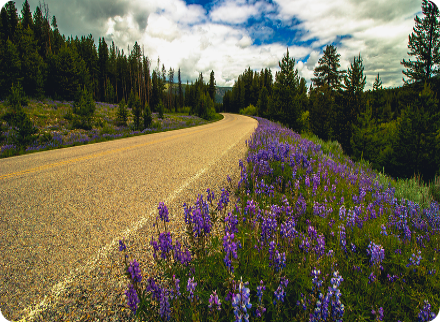
We offer CUSTOM Seed Mixes for All Your Projects!
We've got you COVERED for Landscape
Management, Conservation & More!

